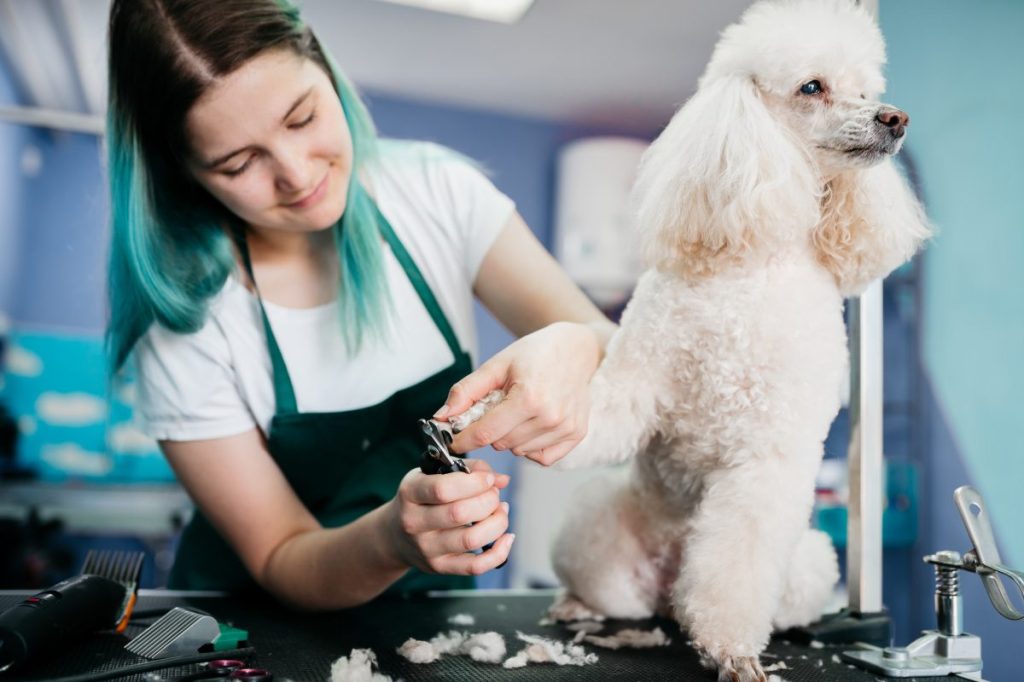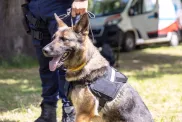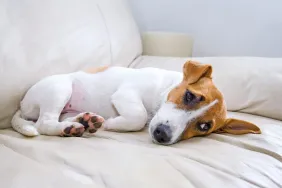Would you like it if you could never take a bath, wash your hair, or trim your nails? Of course not! Now imagine how your dog feels. Good grooming is healthy and happy part of your pup’s life, too. You can do it yourself, or rely on a professional groomer.
Some grooming steps, like brushing, can be handled at home. Performing this regularly will not only keep your dog looking good, but will also give you a chance to inspect your dog for swelling, fleas, and possible infections.
How much grooming your pup needs depends on several factors. Short-coated dogs may only require a bath and brush, and an occasional trim of the nails. Long- and thick-coated dogs, however, may be more prone to tangles and mats. For these breeds, you may want to consider using a professional groomer. The question is, how do you choose the groomer that is right for you and your dog?
Reasons to use a professional dog groomer
In your busy life, you may not always have the time or know-how to keep your dog looking good. Some dogs (like Cocker Spaniels) require special cuts to keep that classic look. Any dog may need to be groomed to remove multiple mats or are too fidgety for you to handle.
Then there are those times your wandering dog meets up with a skunk or somehow acquires a mystery odor that home remedies just don’t help. A grooming pro can help in any and all these situations. They are trained to groom your dog with a gentle hand during difficult situations and know just what to do when you need your Poodle to look like a Poodle again. However, grooming pros can’t perform magic; it’s up to you to stay on top of your dog’s grooming needs.
Finding a groomer
Begin by checking with friends and family. They may have someone they know well from years of experience. Your vet, dog trainer, or even your doggy daycare spot may also be able to recommend someone. You can also contact the National Dog Groomers Association (which certifies groomers) through its website. If all else fails, there’s always Google.
There are no requirements for a groomer to be licensed by a government agency. Many, however, are certified or registered by a local school or association. To see if there are any complaints on file, call up the local Better Business Bureau.
After gathering a list of groomers, call them to check on prices for your breed of dog (they vary), different grooming packages they offer, hours they are open, etc. If they are willing, ask for a current customer to interview about their experiences.
Take a tour of the grooming facility
Prior to deciding on a groomer, pay the business a visit. When you do, these are signs of a good grooming salon to look for:
- Is the lighting adequate?
- Is the facility clean and free of any heavy odors?
- Do the staff groomers handle their clients in a caring and professional manner?
- Are the kennels for dogs and cats separate? Are they of varying sizes to accommodate different breeds?
- Are pets checked consistently for overheating during the drying process?
- Does the salon keep records regarding a pet’s health, vaccinations, past visits, etc.?
The Price of a pampered pooch
The price of grooming can differ due to location, breed, what services are needed (i.e. heavy mat removal will cost more), and the style of the cut. Coat problems will add more to the fee. In some areas, there are groomers who will make house calls with a specially equipped van. These services typically run higher than a salon fee.
The trials and trepidations of grooming
Your dog will probably not take to grooming naturally. Fido needs to get used to the process, something you can do long before they needs a grooming. Begin by massaging your dog all over so they get used to being touched all over their body. Next, introduce brushing, adding a few minutes each day, and reward them afterward. A bath and brush at home will go a long way toward getting your dog to behave for the groomer.
Before the first appointment
First, be sure your dog has been vaccinated for rabies, kennel cough, and other infectious diseases. Many groomers will require proof of current vaccinations before they will accept your dog as a client. Dogs that have been spayed or neutered are more likely to be calmer and more tolerant of grooming. However, if your dog is anxious or fidgety, this can make grooming hard for both your dog and the groomer. You may need to take some time and work with a trainer to help calm your dog down before a groomer will accept him.
When you schedule the grooming, let the groomer know of any extraordinary requirements your pet may have. Alerting the groomer to health conditions, such as arthritis, or sensitive areas on your dog’s body can help them prepare and be cautious. If your dog is too hyperactive, check with your vet; they may recommend a sedative. Some veterinary offices employ groomers. They can monitor your pet and provide medical attention should they notice anything wrong.
Lastly, when it comes time to bring Fido in, make your goodbyes short and sweet. As with leaving home, your dog may get stressed with a long, tearful departure. When they are done, you both will take pleasure in your pup’s shiny coat and sweet smell.









